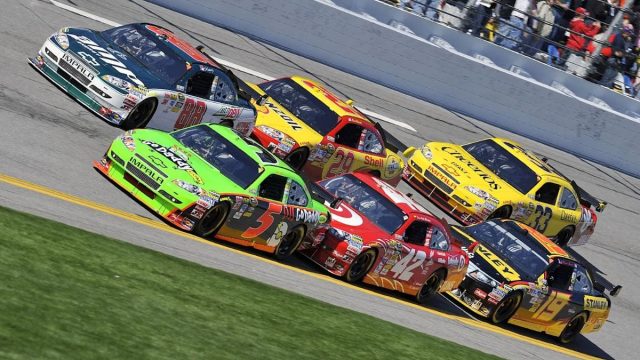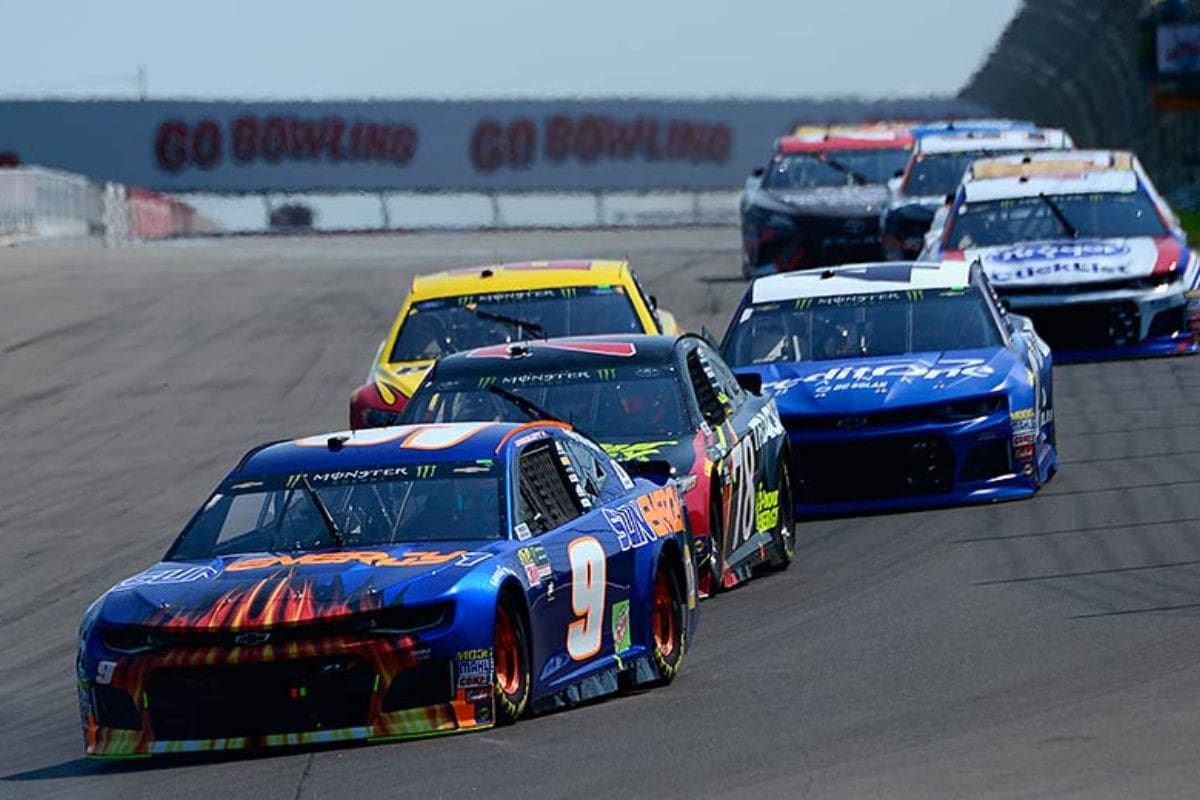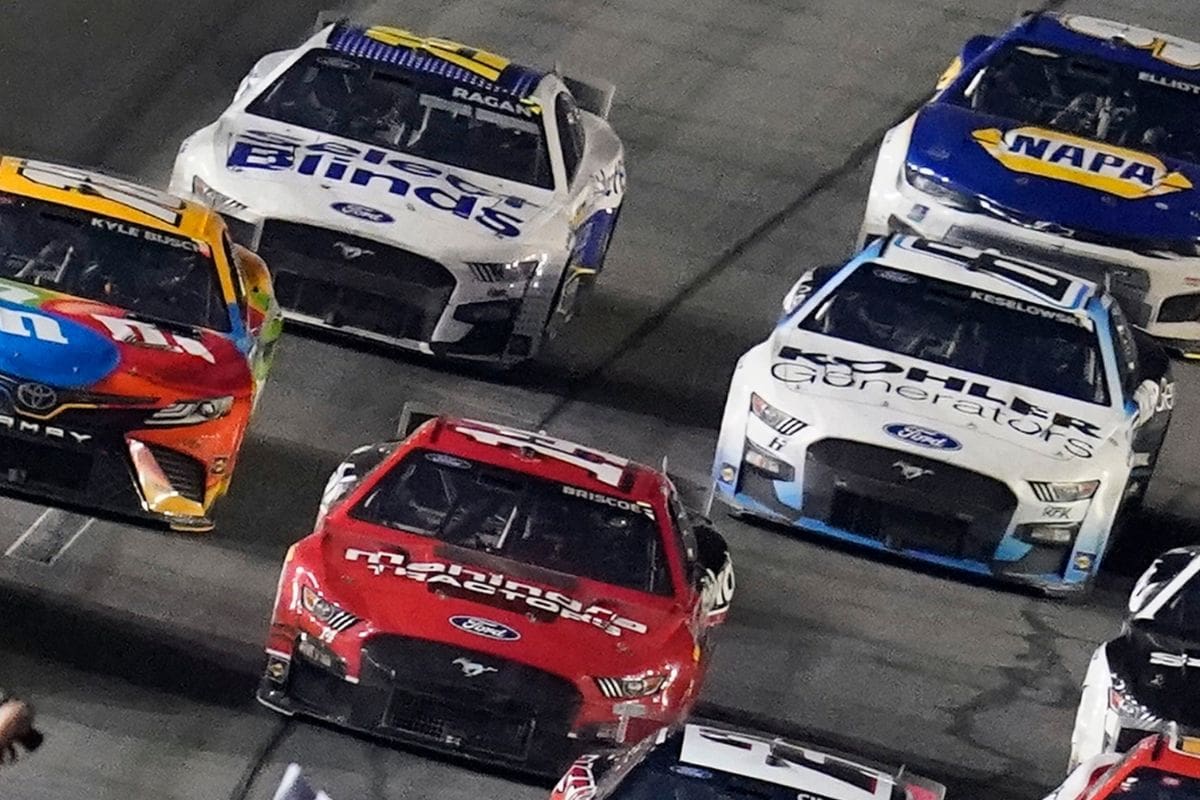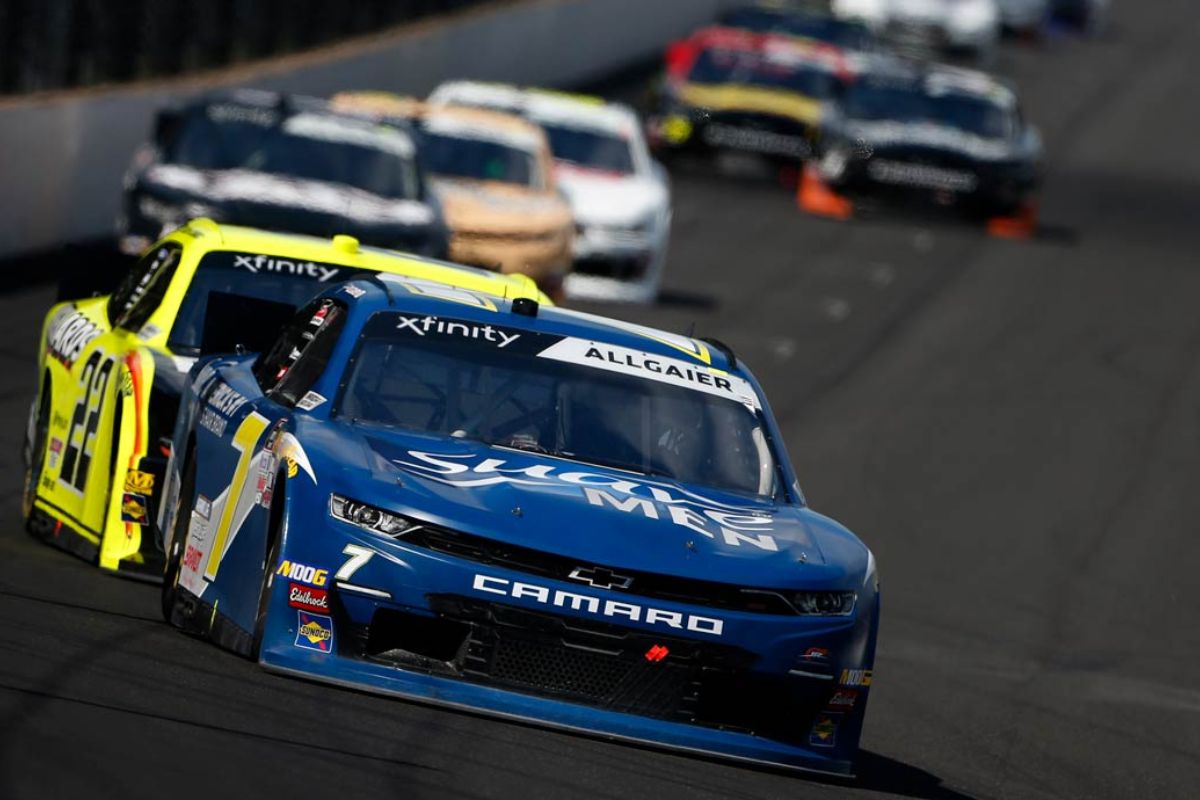NASCAR Overtakes Formula 1: NASCAR’s recent surge in viewership, eclipsing Formula 1 with 1.809 million viewers compared to F1’s 865,000 in the U.S., signals a remarkable shift in the landscape of motorsports. This shift highlights NASCAR’s cultural relevance and raises intriguing questions about the factors contributing to its growing fan engagement. As the sport prepares for the NASCAR Xfinity Series debut on CW, which is expected to further broaden its appeal, one must consider what this means for the future of both NASCAR and its competitors.
Key Highlights
- NASCAR achieved 1.809 million viewers, significantly outpacing Formula 1’s 865,000 viewers in the U.S. market.
- The strong cultural resonance and fan engagement of NASCAR contribute to its dominance in American motorsports viewership.
- Upcoming broadcasts of the NASCAR Xfinity Series on CW highlight the series’ growth and commercial appeal with major advertisers involved.
- NASCAR’s diverse viewer demographics enhance its popularity, attracting a broad audience across various age groups and backgrounds.
- Increasing trends in NASCAR viewership indicate ongoing growth and a promising future for the series compared to Formula 1.
NASCAR Outperforms Formula 1 in Viewership
In a remarkable display of popularity, NASCAR has decisively outpaced Formula 1 in U.S. viewership, achieving a staggering twofold increase compared to its open-wheel counterpart during the latest race weekend. This notable divergence in audience engagement highlights a crucial moment for NASCAR, particularly as it hosted the season’s second playoff battle at Watkins Glen, where Chris Buescher clinched his initial Cup Series victory.
The thrilling final lap against road course specialist Shane van Gisbergen fascinated viewers, showcasing the intense competition that NASCAR consistently delivers.
Conversely, Formula 1, which staged its 17th race at the Baku City Circuit, experienced an exhilarating contest as well. McLaren’s Oscar Piastri executed a daring tactic to overtake Ferrari’s Charles Leclerc, securing his consecutive career win. Despite these enchanting narratives, the viewership numbers clearly emphasize NASCAR’s dominance in the American market.
This phenomenon can be attributed to numerous factors, including NASCAR’s deep-rooted cultural resonance in the U.S., its accessibility, and the emotional investment of its fanbase. The series has successfully harnessed social media and experiential marketing to engage a broader audience, while Formula 1 continues to grapple with identity and visibility in America.
Broadcasting and Viewership Data
Recent broadcasting data emphasizes a remarkable disparity in viewership between NASCAR and Formula 1, highlighting the former’s robust appeal in the American sports landscape. During a recent race weekend, NASCAR’s Cup Series not only dominated the competition but also displayed its capacity to attract a considerably larger audience compared to F1.
The statistics are telling. NASCAR secured an impressive 1.809 million viewers, whereas F1 managed to draw in 865,000 viewers. This contrast highlights the depth of NASCAR’s reach and its established foothold in the U.S. market, as it continues to engage fans across diverse demographics.
Motorsports viewership in the U.S. last weekend:
1) NASCAR Cup (USA Network): 1.809 million viewers
2) NHRA (Fox after NFL): 1.257 million
3) F1 (ESPN): 865,000
4) NASCAR Xfinity (USA): 778,000
5) IndyCar (NBC): 483,000
6) SuperMotocross (USA): 150,000
7) ARCA (FS1): 142,000 pic.twitter.com/Ss4suU8Tzj— Adam Stern (@A_S12) September 19, 2024
Figures highlight the challenges Formula 1 faces in gaining traction in a country where NASCAR’s heritage and fan engagement remain unmatched. The increasing viewership for NASCAR suggests a trend that not only reinforces its dominance but also sets the stage for further growth. As NASCAR continues to break records, it becomes evident that the series is not merely a racing event but a cultural phenomenon, deeply woven into the fabric of American sports entertainment.
Upcoming NASCAR Xfinity Series on CW
As NASCAR continues to solidify its dominance in the American sports landscape, attention turns to the upcoming NASCAR Xfinity Series, which will be prominently featured on the CW network. This tactical partnership marks a notable milestone as the CW prepares to air the final eight races, starting with the Food City 300 at Bristol Motor Speedway. The CW’s involvement signifies not only a shift in broadcasting dynamics but also an opportunity to captivate a broader audience.
The integration of major broadcasting partners such as PRN, MRN, and SiriusXM improves the viewing experience, ensuring that fans are engaged through multiple platforms. While CW and SiriusXM will maintain a consistent presence, the rotation of MRN and PRN introduces variability that can keep the coverage fresh and exciting. This approach caters to different listening preferences, appealing to both traditional fans and newcomers similarly.
Moreover, the CW’s commitment to securing multi-billion dollar advertising deals highlights the commercial viability of the Xfinity Series. This financial backing is indicative of a growing recognition of NASCAR’s value in the sports marketplace, particularly as it seeks to expand its footprint in a competitive landscape.
As the Xfinity Series approaches, the anticipation surrounding its broadcast on the CW is palpable. The series not only serves as a critical platform for emerging talent in NASCAR but also as a crucial opportunity for the CW to solidify its role in the sports broadcasting arena.
Advertising and Playoff Picture in Xfinity Series
The advertising landscape for the upcoming NASCAR Xfinity Series is set to display an impressive roster of corporate giants, signaling a robust financial commitment to the sport. As CW prepares to broadcast its inaugural season of the Xfinity Series, a diverse array of 25 advertisers—including multi-billion dollar entities like Samsung, Toyota, KFC, Snapchat, and Pfizer—will utilize this platform through full-screen and side-by-side advertisements. This tactical alignment not only amplifies brand visibility but also highlights the commercial viability of NASCAR.
.@TheCW says it has added 25 new advertisers for NASCAR coverage including @Samsung, @Snapchat, @KFC, @Toyota, @theNAPAnetwork, @NBCUniversal Parks, @Progressive and @Pfizer.
🔲 It'll have some full-screen ads but says majority of races to be full-screen action or side-by-side. pic.twitter.com/7qKNdPVQzu
— Adam Stern (@A_S12) September 19, 2024
The playoff picture is just as riveting as the Xfinity Series approaches its regular season finale at the Food City 300. With 159.9 miles of action across 300 laps, the competition is fierce. Currently, Chevrolet drivers dominate the top six spots in the playoffs, showing the brand’s strength and consistency. The table below demonstrates the current standings:
As the playoffs loom, the battle intensifies, with drivers like Ryan Sieg grappling to secure their spots, making for an electrifying finale to the season.
News in Brief: NASCAR Overtakes Formula 1
NASCAR’s recent viewership success over Formula 1 signifies a crucial shift in the landscape of American motorsports. The substantial audience engagement reflects NASCAR’s cultural impact and tactical broadcasting initiatives. Anticipation for the upcoming NASCAR Xfinity Series on CW further improves prospects for expansion and talent exhibition. As advertising partnerships strengthen and demographics diversify, NASCAR not only redefines its own narrative but also sets a new benchmark in competitive racing, challenging the traditional dominance of Formula 1.
ALSO READ: NASCAR Drivers Who Could Upset Playoff Contenders: Top Spoilers to Watch



